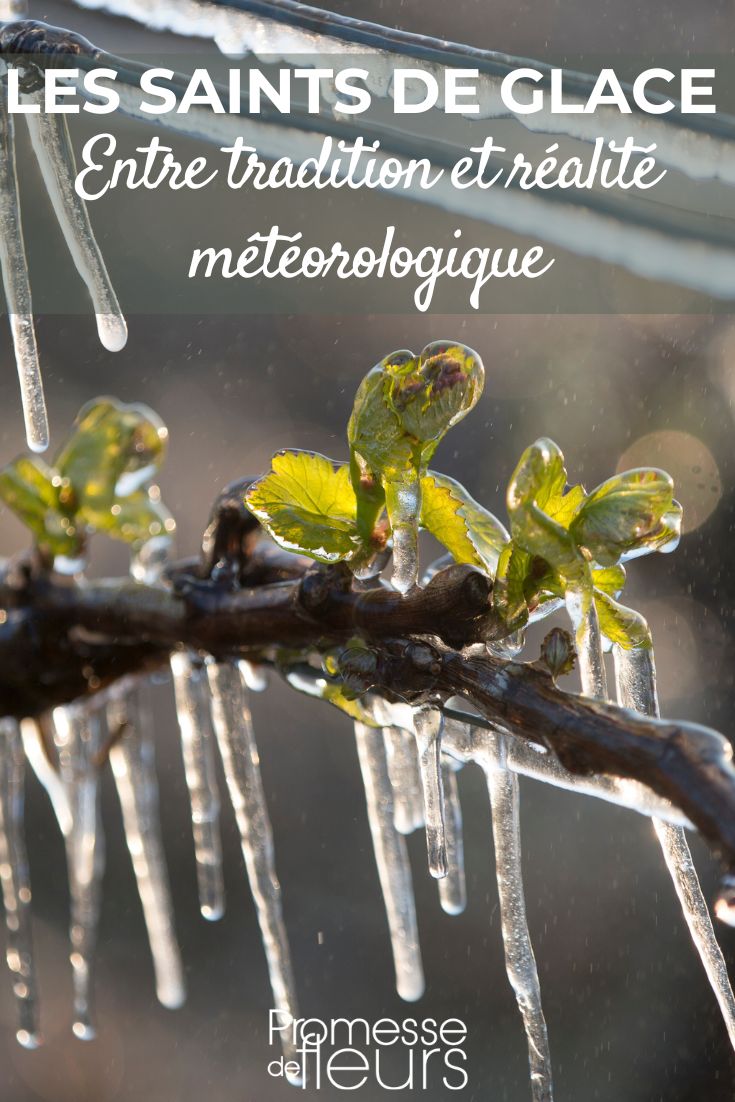In the grand book of gardening traditions, the Ice Saints hold a special chapter, shrouded in morning mists and unexpected frost. This scene unfolds each year around May 11, 12, and 13, a key period when gardeners gaze at the sky with a mix of apprehension and hope. The protagonists of this story? Three historical figures - Mamert, Pancrace, and Servais - transformed into climate sentinels by popular wisdom and rural folklore.
The true ice Saints
The real deal. The official ones. The certified ice saints, with diploma and invoice.
Mamert, the initiator of this icy sequence, kicks off on May 11. Known for instituting the "rogations," processions of prayers to protect the harvests, he is the first harbinger of a possible return of the cold. Next comes Pancrace on May 12, a young martyr saint who, despite his innocence, does not hesitate to remind us that spring has not yet fully settled in. Finally, Servais wraps up this period on May 13, the last bastion against late winter assaults.
Popular tradition attributes to these ice saints an influence on the climate, capable of causing late-night frosts that threaten emerging crops. In the face of this belief, farmers and gardeners turned to these spiritual figures, imploring their mercy to protect vulnerable plantings from the cold's onslaught.

Only three Saints?
Well... not really.
In regions where the cold persists, particularly in cooler areas like the Ardennes, inland Normandy, Hauts-de-France, the Centre, or Allier, frost has been observed in the plains, sometimes until early June. For these areas, tradition enriches the initial trio of ice saints by adding a few figures revered for their connection to the late spring climate.
Saint Boniface is thus honoured on May 14, referenced by the saying that mentions his entry "by breaking the ice." In the south, he takes the place of Saint Mamert, marking the beginning of the celebrations.
Saint Sophie is also celebrated, known as Kalte Sophia or "Cold Sophie" in Alsace, Moselle, and Germany. Her feast on May 15 falls within the tradition of the Eisheilige, the German ice saints, spanning from May 11 to 15. Saint Yves is celebrated on May 19, particularly in Brittany, where he is seen as the last guardian against May's cold, illustrated by the saying that describes him as the most fearsome when he appears. Finally, Saint Bernardin, celebrated on May 20, is associated with a saying that warns against late frosts that could jeopardise the wine harvest. And lastly, Saint Urban marks the end of this period on May 25, closing the cycle of protective saints against the capricious late spring weather.
In southern Europe, such as in Liguria, northern Italy, the ice saints are represented by San Pancrazio (Saint Pancrace), San Servazio (Saint Servais), and San Bonifazio (Saint Boniface), celebrated from May 12 to 14, thus reflecting the richness and variety of traditions linked to this pivotal time of year.
A capricious meteorological reality
Behind the veil of tradition lies a tangible meteorological reality. The Ice Saints are not just an ancient legend or a persistent superstition. They symbolise a period of climatic transition, where cold air masses from the north can still disrupt the atmosphere, causing sometimes surprising drops in temperature. This critical period, although marked by folklore, is based on empirical observations of sudden weather changes that can affect plant growth.
Science teaches us that these temperature variations are not directly linked to these three historical saints, but rather to the complex dynamics of the Earth's atmosphere at this time of year. However, the Ice Saints calendar remains a valuable reference for gardeners, urging them to exercise caution before succumbing to the enthusiasm of summer planting.
At this time of year, the Earth, in its orbit around the Sun, is at a point where the northern hemisphere is gradually emerging from the cold of winter, seeking to warm under the spring rays. However, this transition is not linear and is often disrupted by incursions of cold air from the poles, a result of the global atmospheric circulation that has not yet fully shifted to the summer regime. These sudden and unexpected intrusions of cold air can lead to night frosts, even at a time when the days seem increasingly mild. This interconnection between astronomical position, atmospheric dynamics, and impact on the Earth's climate demonstrates the complexity of natural systems that, over time, have been observed, interpreted, and integrated into folklore, thus providing a scientific basis for the traditions surrounding the Ice Saints.

The legacy of the ice Saints in gardening
In the world of gardening, the Ice Saints are much more than a historical curiosity. They represent an essential milestone, a reminder that nature follows its own calendar, sometimes despite weather forecasts. For gardeners, this period is a call to vigilance: to protect sensitive plants, delay the sowing of the most tender species in open ground, or cover young shoots in case of frost alerts.
The Ice Saints thus teach us a lesson in humility in the face of the elements, reminding us that, despite our technology and knowledge, we remain at the mercy of the whims of the climate. It is a time of respect and adaptation, where the gardener must listen to the signs of nature and act accordingly, armed with patience and a certain degree of caution.
Did we Say 'Ice Saints'?
As a side note, when searching for keywords for a topic to write about, one sometimes gets surprising results. Indeed, while the words "ice saints" dominate Google search results, some typos or surprising errors are also recorded. Thus, searches for "ice breasts," "five of ice," "blood of ice," or even "saint of grace" are also well-placed. While "Ice Breasts" is indeed an Italian-French film by Georges Lautner (though I doubt the number of searches corresponds to the film), the rest leaves me dubious (that said, "Blood of Ice" is also a thriller written by Sharon Sala). Anyway, be careful what you type into the search bar! 😉
The Ice Saints in pop culture
While we're on the subject of cinema and literature, know that the ice saints are also regularly present in popular culture.
French proverbs and sayings:
- "Ice Saints, don't trust them, sow your beans after Saint Medard."
- "Before Saint Gervais and Saint Protais, don't plant your beans."
Literature:
- The poem "The Ice Saints" by Sully Prudhomme (1865) evokes the fragile beauty of spring flowers threatened by the return of cold. The poet uses the image of the Ice Saints to symbolise the end of innocence and the arrival of ripeness.
- The Belgian poet Émile Verhaeren mentions the Ice Saints in his poem "The Black Torches."
Music:
- The song "The Ice Saints" by Belgian artist Arno humorously and nostalgically evokes the tradition.
- The French rock band Les Rita Mitsouko sings "It's the season of the Ice Saints" in their song "Y a d'la haine."
Folklore and Traditions:
- In some regions, processions and blessings of fields take place during the Ice Saints period.
































Comments